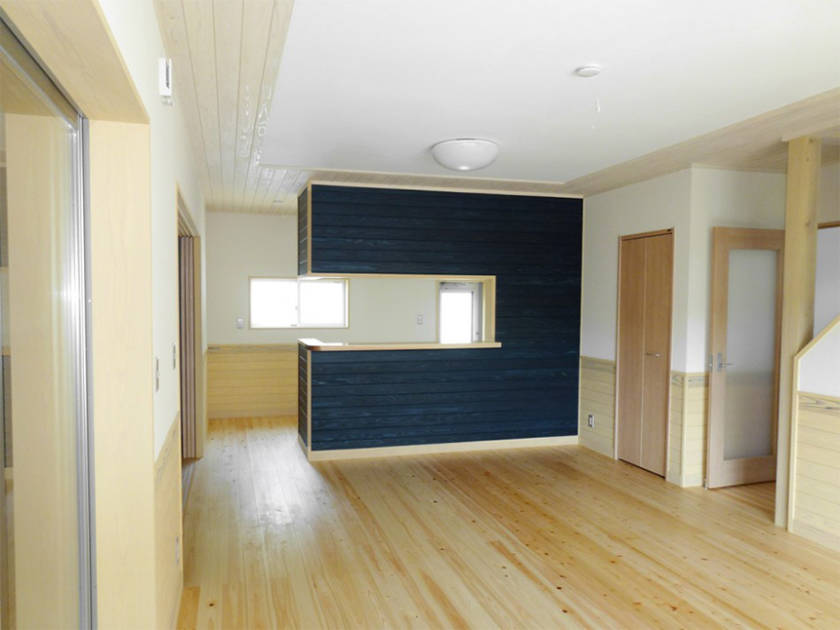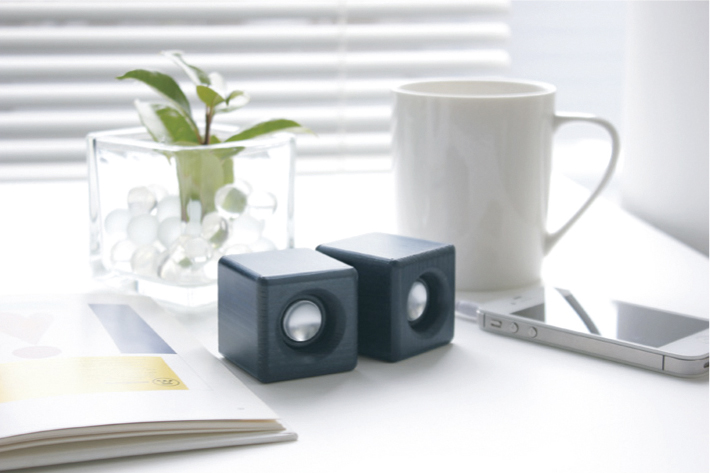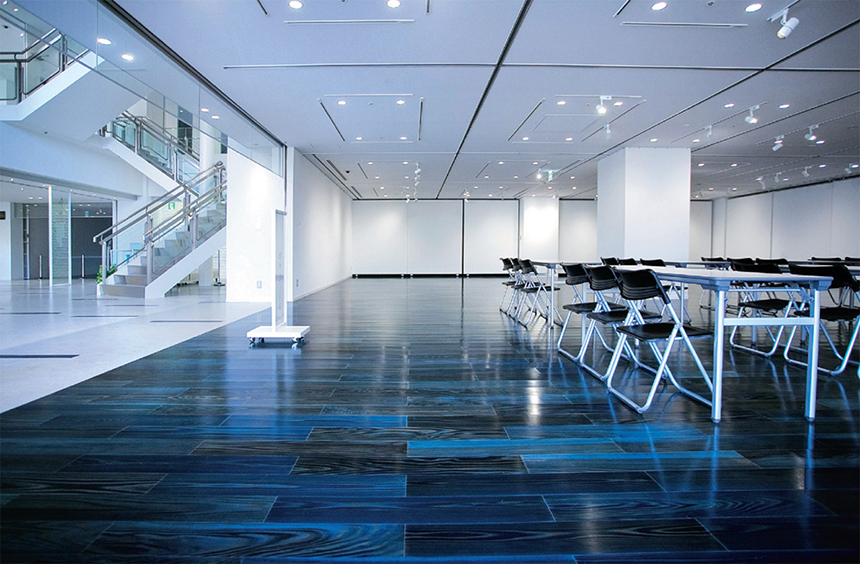Japanese indigo dyeing, known as aizome in Japanese, yields a rich chroma known as ‘Japan blue’. Used in Japan for centuries in textile applications, traditional aizome had seen a sharp decline in the last 100 years due to synthetic blue dyes becoming readily available. Few craftsmen were left earning a living from traditional aizome production.
However, thanks to contemporary Japanese craftsmen and a growing interest in more ‘naturally’ produced goods, a renewed interest in aizome is taking place due to the quality it yields and sensitivity to the environment.

Aside from contemporary textile applications of aizome being used in current fashion, the signature ‘Japan blue’ can now be found being applied to Japanese cedar for use in interior decoration, flooring, and other household accessories.


Tokushima prefecture is Japan’s biggest domestic producer of the indigo plant. Because of this the area is home to skilled craftsmen who have specialized in aizome for generations. Aside from the masterfully produced indigo dyed textiles, Tokushima prefecture’s Dairi Lumber Co. is creating beautiful interior/exterior building material using indigo dyed cedar.

The depth of color achieved in the aizome cedar is impressively rich, creating a cool atmosphere to the space it is incorporated into. While Dairi Lumber Co. focuses on building materials, other craftsmen in Tokushima can be found creating household items such as coasters, speaker boxes and furniture using indigo dyed wood.


These products exhibit a rich blue that still allows the natural surface grain of the wood to be visible unlike painted wood. Due to the nature of the process, each piece is unique in terms of the depth of color achieved, something to be aware of if you are considering purchasing aizome goods.


The renewed interest in aizome by Japanese craftsmen is helping to revive this traditional Japanese craft while giving it new life in contemporary goods. The process when applied to wood creates beautiful color without the use of synthetic and harmful substances such as stains or paint, while creating long lasting rich color.
